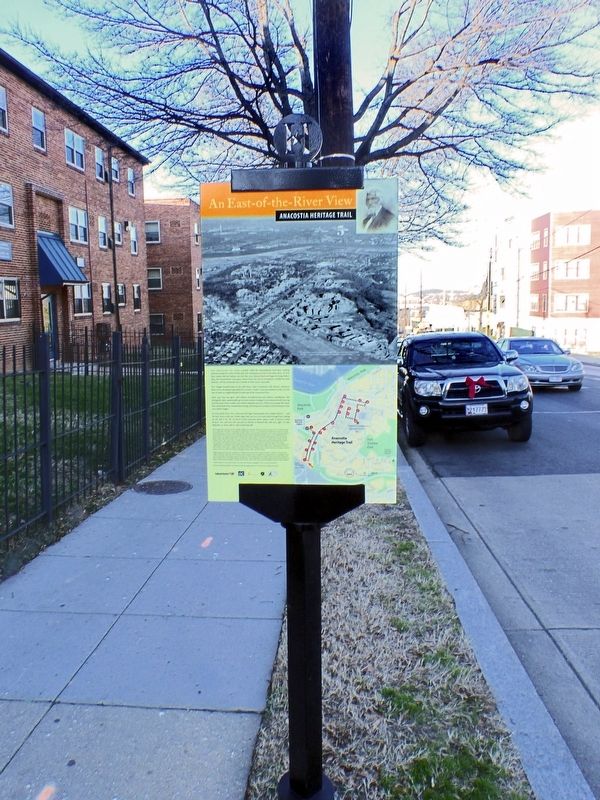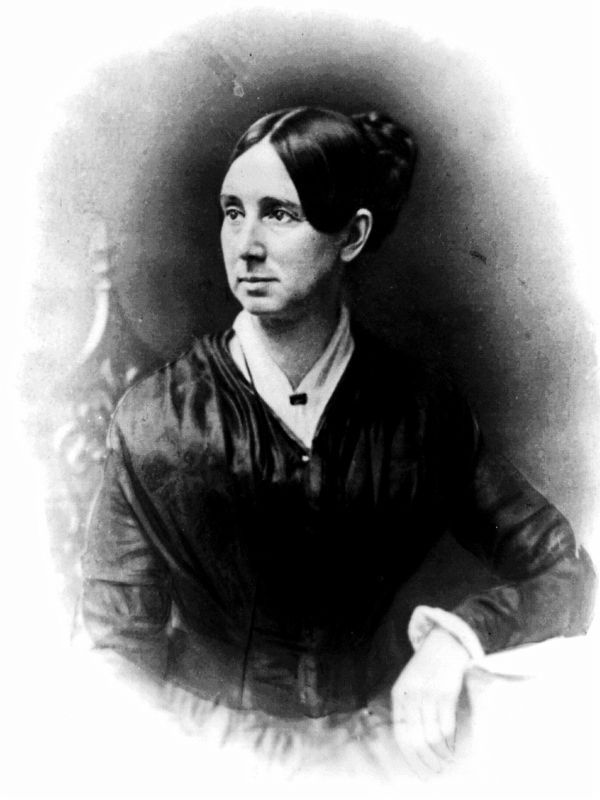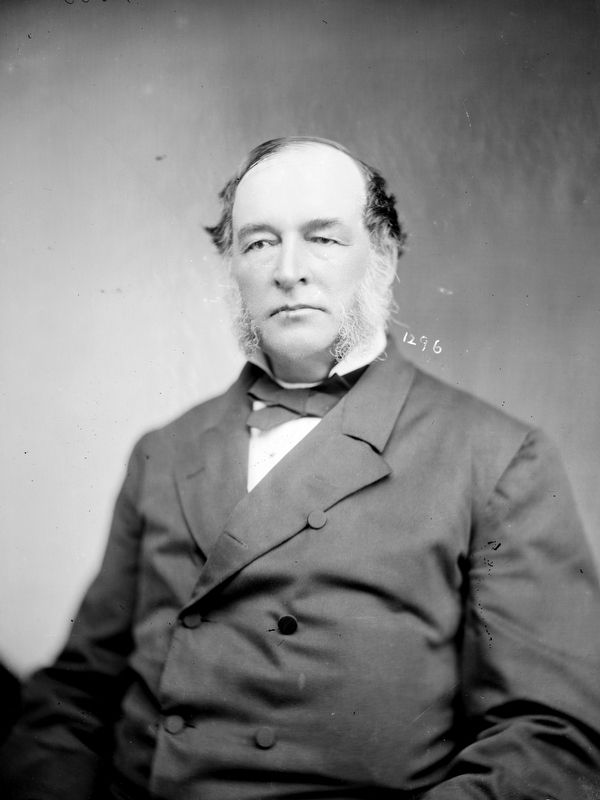Barry Farm in Southeast Washington in Washington, District of Columbia — The American Northeast (Mid-Atlantic)
The Curative Powers of Nature
An East-of-the-River View
— Anacostia Heritage Trail —
The fence and wall ahead of you, on either side of Martin Luther King Jr. Avenue, enclose historic St. Elizabeths Hospital. The pioneering facility opened in 1855 to treat mentally ill members of the armed forces and DC residents. At a time when the mentally ill were ignored or locked away, the prominent Bostonian social reformer Dorothea Lynde Dix persuaded Congress to fund the nation's first public institution to provide them with treatment.
President Millard Fillmore appointed Dr. Charles H. Nichols to head the new Government Hospital for the Insane. Together Nichols and Dix chose this beautiful spot away from the city because they believed in the curative powers of nature.
During the Civil War (1861-1865) the hospital treated ill and injured soldiers, both Union and Confederate, who preferred to call it "St. Elizabeths," an old name for the property. Congress made the change permanent in 1916. The East Campus, across the avenue, was added in 1869, when the government bought Shepherd Farm to raise food for staff and patients. For nearly a century, the hospital was practically self-sufficient.
St. Elizabeths' patient population peaked at close to 8,000 in the 1940s. After World War II, many patients went to new veterans' hospitals or received treatment in residential settings. The DC government provided mental health services on the West Campus from 1987 until 2004. Redevelopment began in 2011.
Old maps show many names for this street. Originally Bladensburg-Piscataway Road, it became known as Asylum Road once the hospital opened. In 1872 it was renamed Nichols Avenue for the hospital's first superintendent. A century later it became Martin Luther King Jr. Avenue to honor the slain civil rights leader.
Erected 2013 by Cultural Tourism DC. (Marker Number 5.)
Topics and series. This historical marker is listed in these topic lists: African Americans • Civil Rights • Science & Medicine • Women. In addition, it is included in the Anacostia Heritage Trail, and the Former U.S. Presidents: #13 Millard Fillmore series lists.
Location. 38° 51.417′ N, 76° 59.758′ W. Marker is in Southeast Washington in Washington, District of Columbia. It is in Barry Farm. Marker is on Martin Luther King Jr. Avenue Southeast north of Pomeroy Road Southeast, on the right when traveling south. Touch for map. Marker is at or near this postal address: 2651 Martin Luther King Jr Avenue Southeast, Washington DC 20020, United States of America. Touch for directions.
Other nearby markers. At least 8 other markers are within walking distance of this marker. Grandpapa's Farm (about 400 feet away, measured in a direct line); Hillsdale (about 600 feet away); St. Elizabeths Hospital (about 600 feet away); Campbell African Methodist Episcopal Church (approx. 0.2 miles away); Barry Farm Dwellings (approx. 0.2 miles away); Roads That Divide (approx. ¼ mile away); Redevelopment of St. Elizabeths (approx. ¼ mile away); History of St. Elizabeths Hospital (approx. 0.3 miles away). Touch for a list and map of all markers in Southeast Washington.
Credits. This page was last revised on January 30, 2023. It was originally submitted on December 31, 2016, by Allen C. Browne of Silver Spring, Maryland. This page has been viewed 377 times since then and 14 times this year. Photos: 1, 2, 3, 4. submitted on December 31, 2016, by Allen C. Browne of Silver Spring, Maryland. 5. submitted on January 7, 2017, by Allen C. Browne of Silver Spring, Maryland. • Bill Pfingsten was the editor who published this page.
Editor’s want-list for this marker. A close-up photo of the reverse side of the marker. • Can you help?




